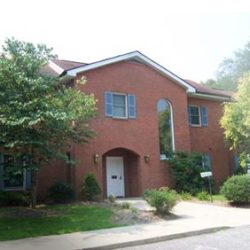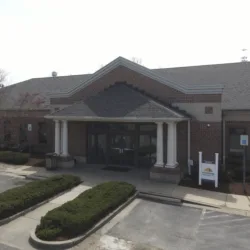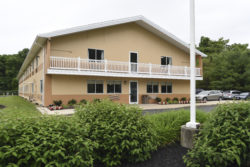ASAM Levels of Care for Pyramid Healthcare – Maryland: Q&A With Dominic Barone, VP of Operations

1. What ASAM levels of care are offered at our Maryland Facilities?
- Harford – 3.7WM, 3.7, 3.5 (Male and Female)
- Charlotte Hall – 3.7WM, 3.7, 3.5 (Male and Female)
- California Residential & Outpatient – 3.5, 3.3, 3.1 (male only), We also offer level 2.1 (intensive outpatient) and level 1 (outpatient) to both males and females.
2. Break down the ASAM levels of care
Level 1: outpatient treatment consists of treatment for substance use that is less than nine hours a week. Level 1 is appropriate for people with less severe disorders, or as a step-down from more intensive services.
Level 2.1: is intensive outpatient services consisting of at least nine and no more than 20 hours per week of treatment. This type of program would be beneficial for individuals who are healthy enough to attend work or school and have a supportive home environment.
Level 2.5: is partial hospitalization, which is outpatient services for at least 20 hours a week. This level of care provides structure and daily oversight for people who need daily monitoring, but not 24/7 care.
Level 3.1: is clinically managed low-intensity residential treatment. Services at this level consist of a residential, often home-like setting where people reside for a longer period of time. Treatment is only required to be five hours per week and covers topics such as relapse management.
Level 3.3: is clinically managed high-intensity and population-specific services. These programs offer services and a curriculum that are highly targeted towards a specific client population. This includes people with traumatic brain injuries, the elderly, or people with developmental disabilities.
Level 3.5: is clinically managed high-intensity residential services. These services are designed for people with an active substance use disorder and/or co-occurring mental health diagnosis who require 24-hour oversight in order to remain abstinent and safe.
Level 3.7: is medically monitored high-intensity inpatient treatment. Individuals who require intensive medical and psychological monitoring in a 24-hour setting would be most appropriate for this level of care.
Level 3.7WM: is medically monitored high-intensity inpatient treatment that includes withdrawal management services. These services are for people who need detoxification from one or more substances in a safe, physician-supervised 24-hour setting.
Level 4.0: is medically managed intensive inpatient for patients who need to be treated in a hospital setting due to medical concerns. Withdrawal management is carefully overseen by a physician to ensure a safe detox. Pyramid does not offer this level of care but would often admit a client once they have been medically stabilized in this setting.
3. Do these levels of care give Pyramid Healthcare Maryland a competitive edge?
Yes. Having a full continuum means that we can serve clients who have a variety of needs, and then increase or decrease the structure of the treatment based on progress. Also, having the ability to offer continuity of care for up to a year can drastically improve chances of successful recovery.
4. Is it hard to get into treatment?
No. Having 24-hour admissions and transportation available affords clients the opportunity to access treatment the moment they’ve decided they want help. We all know the disease of addiction does not only impact us Monday through Friday 9a-5p, having dedicated staff working around the clock every day of the year ensures that our clients get the care and attention they need when they need it.
5. How do I know what ASAM level of care is best/necessary for my loved one?
In order to make the right recommendation, a clinical professional will complete an assessment to determine what course of treatment is best. Our admissions staff is also available to answer questions, or screen clients 24 hours a day, 7 days a week, 365 days a year, and review what options are available to them. If Pyramid Healthcare does not offer the services that are best for the client, we will assist with referrals and getting them connected to a comparable provider who does offer those services.
6. Why is ASAM important for my or a loved one’s treatment?
The American Society for Addiction Medicine (ASAM) is a medical society founded in 1954 to help addiction professionals and other providers come together and establish best practices in treatment. ASAM’s assessment tool gives providers across the world a consistent matrix to use when determining how to match client symptoms with appropriate recommendations.
These guidelines are the result of work that began in the 1980s and are now the most comprehensive and widely-used criteria to determine placement in treatment, as well as patients’ transfer and discharge from treatment programs. The ASAM criteria include a detailed assessment of the person seeking treatment, which entails a thorough exploration of their biological, emotional and social needs.
The ASAM criteria use a multidimensional approach to assess a person’s needs, strengths, resources, social support and various assets. The ASAM criteria help determine the best level of care for the person’s substance use disorder at the time of assessment, accounting for their need for medical oversight and safety. The ASAM criteria can be used at entry into treatment and during transitions to different levels of care on the continuum.
6. What questions should you ask regarding ASAM levels of care?
That really depends on the person seeking treatment and what they want their treatment to look like. There is no “one size fits all” approach to behavioral health. In some instances medication-assisted treatment (MAT) may be the best option, there are various pharmacological therapies that Pyramid Healthcare and other providers offer that may be beneficial to treatment and recovery. Not all providers offer MAT or psychiatric services, treatment should be tailored around the individual, and the individual should not have to tailor their treatment around a provider.
7. Do clients typically progress through different ASAM levels of care in a linear fashion?
Clients often start in the higher levels of care and work their way down into less intensive levels as they progress through their treatment and recovery. Clients can move back into higher levels of care when/if needed, for instance, if a relapse occurred, or an incident that required more intensive care than the level they are in. Again, treatment should be individualized to meet the need(s) of the individual, there are certain parameters in which we facilitate programming but ultimately treatment decisions are that of the individual, we are simply a conduit to guide them and provide options.







